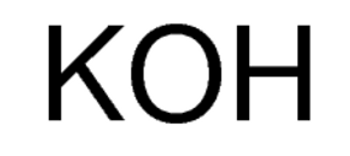Description
Potassium antimonyl tartrate trihydrate
ACS reagent, ≥99%
Synonym(s):
Antimony potassium tartrate trihydrate, Tartar emetic
Empirical Formula (Hill Notation):
C8H4K2O12Sb2 · 3H2O
CAS Number:
28300-74-5
Molecular Weight:
667.87
EC Number:
234-293-3
MDL number:
MFCD00167056
PubChem Substance ID:
24863959
NACRES:
NA.21
PROPERTIES
grade
ACS reagent
Quality Level
200
Assay
≥99%
99.0-103.0%
form
powder
impurities
≤0.020 meq/g Titr. acid or base
loss
≤2.7% loss on drying
mp
≥300 °C (lit.)
solubility
water: soluble
cation traces
As: ≤0.015%
SMILES string
O.O.O.[K+].[K+].O=C1O[Sb-]23OC1C4O[Sb-]5(OC(C(O2)C(=O)O3)C(=O)O5)OC4=O
InChI
1S/2C4H4O6.2K.3H2O.2Sb/c2*5-1(3(7)8)2(6)4(9)10;;;;;;;/h2*1-2H,(H,7,8)(H,9,10);;;3*1H2;;/q2*-2;2*+1;;;;2*+3/p-4
InChI key
WBTCZEPSIIFINA-UHFFFAOYSA-J
General description
Potassium antimonyl tartrate trihydrate is a metalloid salt in which the antimony is in trivalent state (SbIII).[1] Potassium antimonyl tartrate (PAT) is an antiparasitic agent[2] predominantly used for treating infections caused by the parasite Leishmania.[3] Its antiangiogenic and antitumor properties has been investigated in nonsmall-cell lung cancer (NSCLC) cells.[4] Studies in Chinese hamster ovary cells show that it may prevent the repair of DNA double strand breaks (DSBs) caused by γ-irradiation.[5]
Application
Potassium antimonyl tartrate trihydrate has been used in the dose-inhibition experiments to evaluate the dose-inhibition curves of antimony-based antileishmanial compoundsagainst Leishmania promastigotes in medium 199.[6]
Potassium antimonyl tartrate trihydrate may be used to prepare antimony (Sb(III)) stock solution in deionized water (100mg/L).[7] It may also be employed in the spectrophotometric determination of total phosphorus in dry sediments.[8]
Packaging
5, 100, 500, 500 g
SAFETY INFORMATION
Signal Word
Danger
Hazard Statements
H301 - H315 - H317 - H332 - H411
Precautionary Statements
P261 - P273 - P280 - P301 + P310 - P302 + P352 - P304 + P340 + P312
Hazard Classifications
Acute Tox. 3 Oral - Acute Tox. 4 Inhalation - Aquatic Chronic 2 - Skin Irrit. 2 - Skin Sens. 1
Storage Class Code
6.1C - Combustible, acute toxic Cat.3 / toxic compounds or compounds which causing chronic effects
WGK
WGK 3
Flash Point(F)
Not applicable
Flash Point(C)
Not applicable
Personal Protective Equipment
dust mask type N95 (US), Eyeshields, Gloves







